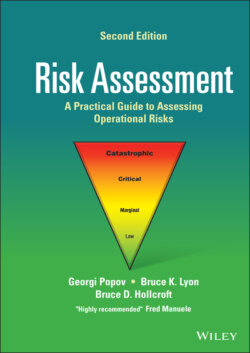Читать книгу Risk Assessment - Georgi Popov - Страница 17
1.2.4 Core Risk‐Related Competencies
ОглавлениеThere is a section on core competencies for risk management within ASSP’s original paper on the Risk Management Institute and the most significant points are paraphrased here. Reference is made in that paper to several standards that contain relative definitions and descriptions. They are mentioned in this chapter – Z10, 45001, the 690 series, and Z590.3.
It is suggested that safety and health professionals know how to effectively implement and maintain a risk management system, for which guidance is given in this chapter. However, we know from member and stakeholder feedback that there is an ongoing need for training and development to effectively implement risk assessment systems.
Obviously, safety practitioners would have knowledge of relative principles, basic guidelines, and common risk assessment techniques. Be cautious here. Elsewhere in this chapter it is suggested that having knowledge of five risk assessment techniques would be sufficient for most, but not all, situations that safety professionals will need to consider. As this chapter is being written, a study is in progress that mentions, in detail, 49 risk assessment techniques. Some are exceptionally complex. Whatever risk assessment techniques a safety and health professional chooses to apply should meet the needs of the organization and not be overly complex if that can be avoided.
Hopefully, safety and health professionals will become involved with engineers in design reviews where the most effective and economical risk avoidance or control can be implemented.
Overall, safety and health professionals need to become more skilled so that they can provide counsel on analyzing risk assessments, establishing acceptable risk levels, utilizing a hierarchy of control system, identifying serious injury, illness and fatality potentials, monitoring the effectiveness of risk control measures, and prioritizing risks.
Throughout, communication would be critical for all affected in all four stages of the operational setting: (i) preoperational, (ii) operational, (iii) post incident, and (iv) post operation.
